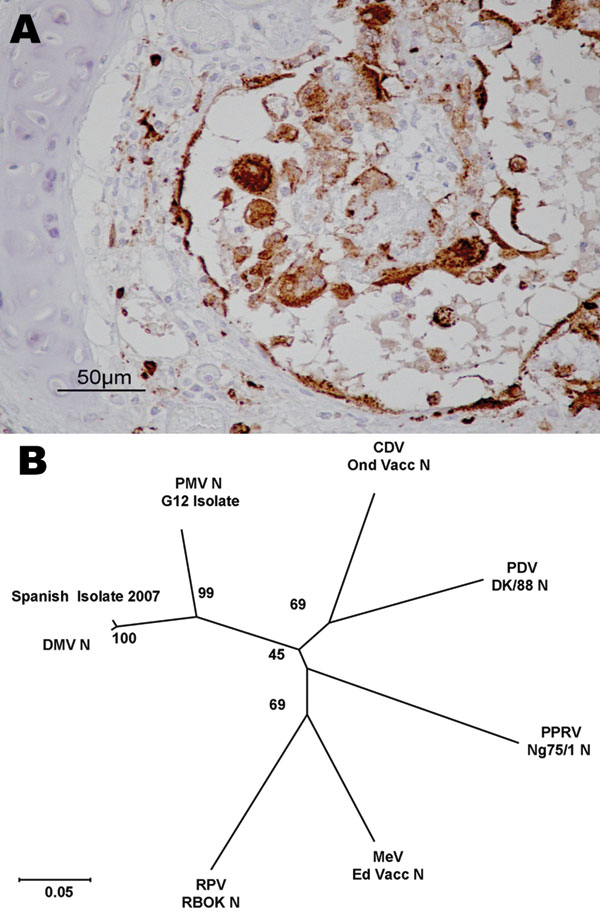Volume 14, Number 3—March 2008
Dispatch
Dolphin Morbillivirus Epizootic Resurgence, Mediterranean Sea
Figure 2

Figure 2. Evidence concerning the identity of the morbillivirus infecting Mediterranean striped dolphins in 2007. A) Immunohistologic staining of lung tissue with a MoAb anti CDV-NP, counterstained with hematoxylin. Epithelial bronchiolar cells and cells in the bronchiolar lumen are positively stained. B) Phylogenetic analysis of the N1/N2 region of the morbillivirus N genes. The number indicated at each node represents the bootstrap value after 10,000 replicates. The evolutionary distances were computed with the Kimura 2-parameter method and are in the units of the number of base substitutions per site. The tree is drawn to scale, with branch lengths in the same units as those of the evolutionary distances used to infer the phylogenetic tree. Details of each isolate used for this study and accession numbers for each of the sequences are as follows: DMV 2007 isolate (EU124652), PMV G12 isolate (AY949833), PPRV Nigeria/75/1 Vaccine (X74443), PDV DK/88 strain (X75717), RPV RBOK vaccine strain (Z30697), DMV isolate (AJ608288), CDV Onderstepoort vaccine strain (AF305419), and MV Edmonston vaccine strain (AF266288). DMV, dolphin morbillivirus; PMV, porpoise morbillivirus; PPRV, peste des petits ruminants virus; PDV, phocine distemper virus; RPV RBOK, rinderpest virus RBOK strain; CDV, canine distemper virus; MV, measles virus.